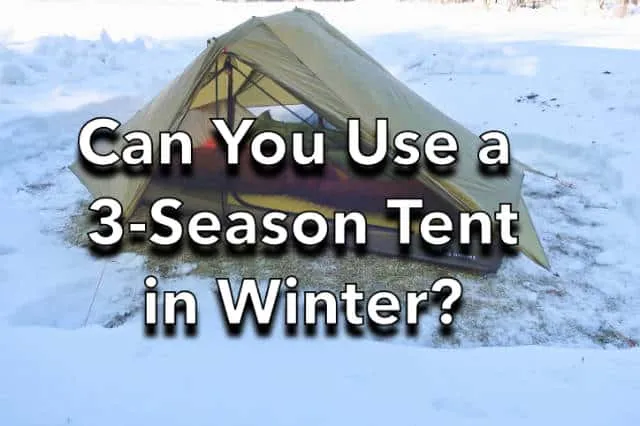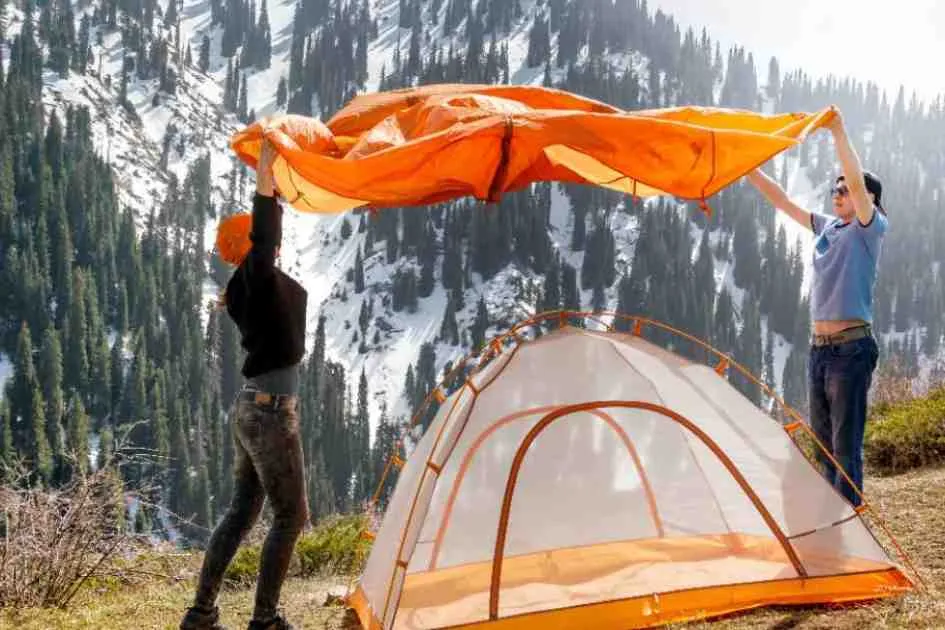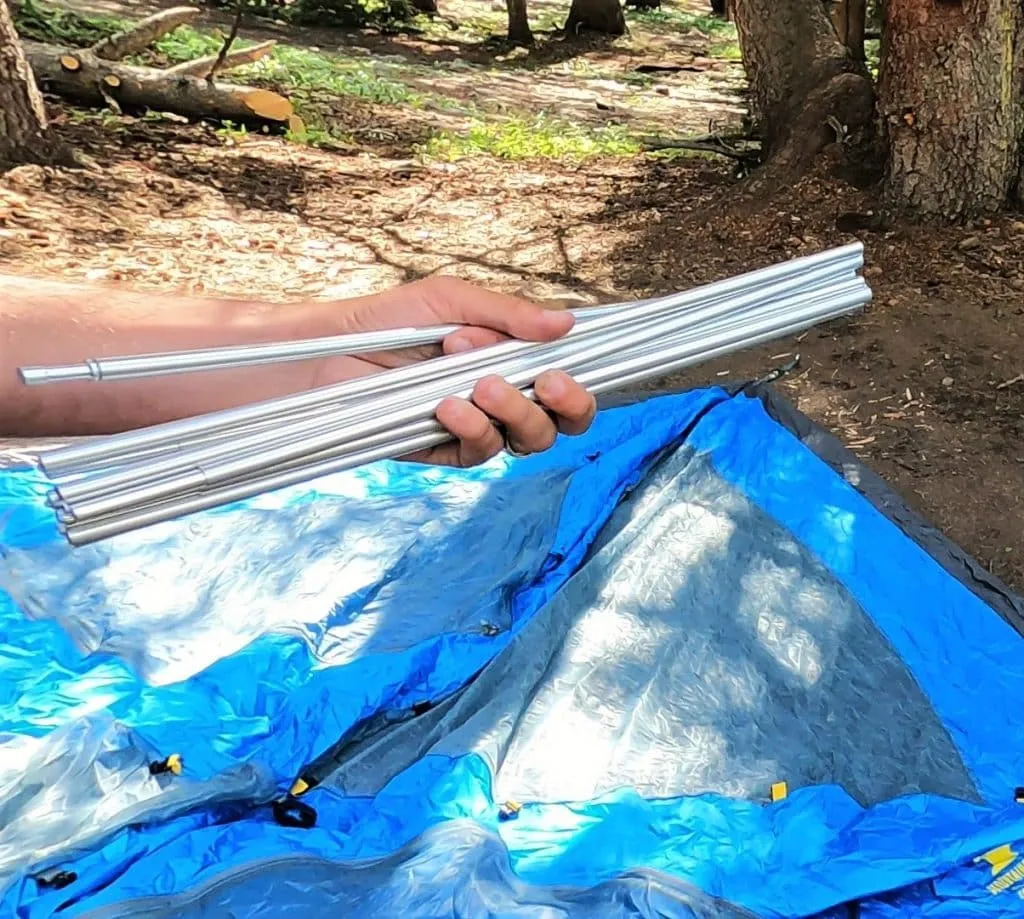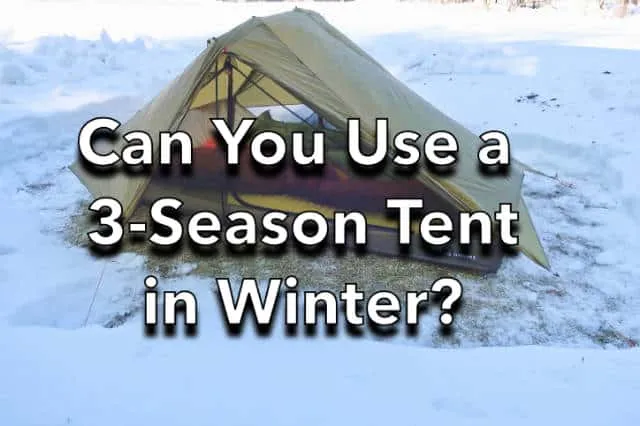Winter camping doesn't always require expensive 4-season gear. Can you winterize a 3 season tent? Absolutely! After years of winter camping across various terrains, I've discovered proven techniques to transform your regular 3-season tent into a reliable winter shelter. This comprehensive guide covers everything from ground insulation to wind protection, ensuring you stay warm and safe during cold-weather adventures. Whether you're planning a winter camping trip or exploring options from Nature Guests, these winterization strategies will help you extend your camping season affordably and effectively.
Understanding 3-Season vs 4-Season Tents

Before diving into whether can you winterize a 3 season tent, it's crucial to understand the fundamental differences between 3-season and 4-season tents. During my early winter camping experiences in the Colorado Rockies, I learned these distinctions the hard way when my standard 3-season tent struggled against unexpected snow loads and fierce winds.
The primary difference lies in construction and design philosophy. 3-season tents prioritize ventilation and weight savings, featuring mesh panels, lighter fabrics, and flexible pole structures. They're designed for spring, summer, and fall conditions where snow loads and extreme winds aren't primary concerns. Conversely, 4-season tents use stronger poles, solid fabric walls, and reinforced anchor points specifically engineered for winter conditions.
However, this doesn't mean you can't adapt a 3-season tent for winter use. Many experienced winter campers successfully use winterized 3-season tents in moderate winter conditions. The key is understanding your tent's limitations and implementing appropriate modifications. Whether you're using a 2-person, 4-person, or 6-person 3-season tent, the winterization principles remain consistent.
The answer to can you winterize a 3 season tent is definitively yes, but success depends on proper preparation, appropriate gear selection, and understanding environmental limitations. Most 3-season tents can handle light to moderate snow, temperatures down to 10-15°F, and moderate winds when properly winterized. However, they're not suitable for extreme conditions like heavy snow loads, blizzards, or extended sub-zero temperatures without significant modifications.
Essential Winterization Techniques
Successfully winterizing a 3-season tent requires a systematic approach addressing the primary challenges of cold-weather camping: ground insulation, wind protection, moisture management, and structural reinforcement. After experimenting with various techniques during winter camping trips across different climates, I've identified the most effective strategies that answer the question: can you winterize a 3 season tent effectively?
Ground Insulation and Moisture Protection

Ground insulation represents the most critical aspect when considering can you winterize a 3 season tent. The earth can drain heat from your body 25 times faster than air, making proper ground insulation essential for survival. Start by selecting an appropriate tent site, clearing snow to create a level platform, and if possible, digging down to bare ground or creating a snow platform that's been compacted for several hours.
Layer your insulation system strategically. Begin with a quality tent footprint, followed by a closed-cell foam pad like the Therm-a-Rest Z Lite Sol Sleeping Pad, which provides excellent insulation with an R-value of 2.6. This creates a barrier between your tent floor and the cold ground while providing additional puncture protection.
For additional protection, consider adding a reflective emergency blanket beneath your sleeping pad or using a second closed-cell foam pad. The combination approach significantly improves thermal efficiency and answers the practical concerns about whether can you winterize a 3 season tent sufficiently for cold conditions. Proper waterproofing is equally important – apply seam sealer to all tent seams before your trip, and consider bringing a backup tarp for additional protection.
Wind Protection and Anchoring Systems
Wind represents one of the greatest challenges when determining can you winterize a 3 season tent effectively. Unlike 4-season tents with reinforced anchor points and stronger pole structures, 3-season tents require additional support systems to handle winter wind loads. During a memorable winter camping trip in Wyoming, I learned this lesson when gusts exceeding 40 mph nearly destroyed my inadequately anchored tent.
Invest in specialized winter anchoring systems designed for snow and frozen ground conditions. The MSR Blizzard Stake Kit provides exceptional holding power in snow, featuring broad, lightweight stakes that work by compacting snow rather than penetrating like traditional stakes. These stakes are specifically engineered for winter conditions where standard tent stakes fail.
Create additional wind barriers using natural terrain features, snow walls, or portable windscreens. When asking can you winterize a 3 season tent, consider that wind protection often makes the difference between a comfortable night and a miserable experience. Build snow walls approximately 2-3 feet high on the windward side of your tent, ensuring they're far enough away to prevent snow accumulation against your tent walls.
Implement redundant guy-line systems using paracord and adjustable tensioners. Attach additional guy-lines to every available attachment point on your tent, creating a web of support that distributes wind loads more effectively. This approach significantly improves your tent's wind resistance and directly addresses concerns about whether can you winterize a 3 season tent for challenging conditions.
Recommended Gear for Tent Winterization

When exploring whether can you winterize a 3 season tent, having the right gear makes the difference between success and failure. Through years of winter camping experience, I've compiled a comprehensive list of essential equipment that transforms standard 3-season tents into capable winter shelters. This gear selection focuses on proven products that address the specific challenges of cold-weather camping.
Waterproofing & Sealing
Proper waterproofing is essential when considering can you winterize a 3 season tent. The Gear Aid Seam Grip WP Waterproof Sealant provides professional-grade sealing for tent seams, preventing moisture infiltration that could compromise your winter camping experience.
Heating Solutions
Safe heating dramatically improves comfort when asking can you winterize a 3 season tent. The Mr. Heater Big Buddy Portable Heater provides reliable, safe heating with automatic shut-off features designed for enclosed spaces.
Additional essential gear includes emergency repair kits, extra batteries for headlamps, backup food and water supplies, and communication devices. The question can you winterize a 3 season tent effectively depends largely on your preparation and gear selection. I always pack redundant systems for critical items like lighting, navigation, and emergency communication.
Expert Winter Tent Tips Video
Watch this expert demonstration showing practical techniques for making your 3-season tent warmer during winter camping. The video covers proven methods that directly address the question: can you winterize a 3 season tent effectively?
For ground insulation, the Therm-a-Rest Z Lite Original Sleeping Pad provides excellent closed-cell foam insulation that never fails, even when punctured. Its accordion-style design makes it easy to pack and deploy, while providing reliable R-value for ground insulation. This type of gear selection directly impacts your success when determining can you winterize a 3 season tent for your specific needs.
Safety Considerations for Winter Camping
Safety represents the paramount concern when asking can you winterize a 3 season tent for winter camping adventures. Winter conditions amplify risks and reduce margin for error, making comprehensive safety planning essential. During my winter camping experiences, I've encountered situations where proper safety preparation made the difference between an enjoyable adventure and a potential emergency.
Critical Safety Guidelines
- Always inform others of your planned route and expected return time
- Carry multiple communication devices including satellite communicators
- Pack emergency shelter materials beyond your primary tent
- Maintain redundant systems for navigation, lighting, and heating
- Monitor weather conditions continuously and have evacuation plans
Carbon monoxide awareness becomes critical when using heating devices in winterized tents. When considering can you winterize a 3 season tent safely, never use propane heaters without proper ventilation, even those marketed as "indoor safe." Always maintain ventilation gaps and consider battery-powered carbon monoxide detectors for extended winter camping.
Hypothermia prevention requires constant vigilance in winter camping situations. Recognize early symptoms including uncontrollable shivering, loss of coordination, and mental confusion. When determining can you winterize a 3 season tent for your skill level, honestly assess your cold-weather experience and start with shorter trips in moderate conditions before attempting extended winter camping.
Emergency preparedness should include backup shelter options like emergency bivouacs or snow cave construction knowledge. Winter conditions can deteriorate rapidly, potentially compromising even properly winterized 3-season tents. Understanding when can you winterize a 3 season tent sufficiently versus when you need purpose-built winter gear represents a crucial safety decision that could save your life.
Practice your winterization techniques in controlled environments before relying on them in remote locations. Set up your winterized tent in your backyard during cold weather, test all systems, and identify potential weaknesses. This preparation directly addresses practical concerns about whether can you winterize a 3 season tent effectively for your specific camping objectives and skill level.
Conclusion
The definitive answer to can you winterize a 3 season tent is an emphatic yes, provided you understand the techniques, limitations, and safety considerations involved. Through proper ground insulation, wind protection, moisture management, and appropriate gear selection, a well-winterized 3-season tent can provide reliable shelter in moderate winter conditions.
Success depends on honest assessment of conditions, thorough preparation, and conservative decision-making. While can you winterize a 3 season tent for winter use, it's not suitable for extreme conditions like heavy snow loads, sustained sub-zero temperatures, or severe storms. Understanding these limitations ensures safe and enjoyable winter camping experiences.
The techniques covered in this guide—from specialized ground insulation using products like the Therm-a-Rest sleeping pads to proper anchoring with MSR Blizzard stakes—provide a comprehensive foundation for winter tent camping. Remember that asking can you winterize a 3 season tent is just the beginning; successful implementation requires practice, proper gear, and respect for winter conditions.
For specific tent recommendations, explore our detailed guides on 2-person, 4-person, and 6-person 3-season tents. Whether you're planning your first winter camping adventure or expanding your cold-weather capabilities, proper winterization techniques transform affordable 3-season tents into capable winter shelters.
Ready to Start Winter Camping?
Visit our comprehensive winter tent camping resource for additional tips, gear reviews, and seasonal preparation guides.
Remember: when someone asks can you winterize a 3 season tent, the answer lies not just in possibility, but in preparation, practice, and respect for winter's power. Stay safe, stay warm, and enjoy the unique beauty of winter camping adventures.


